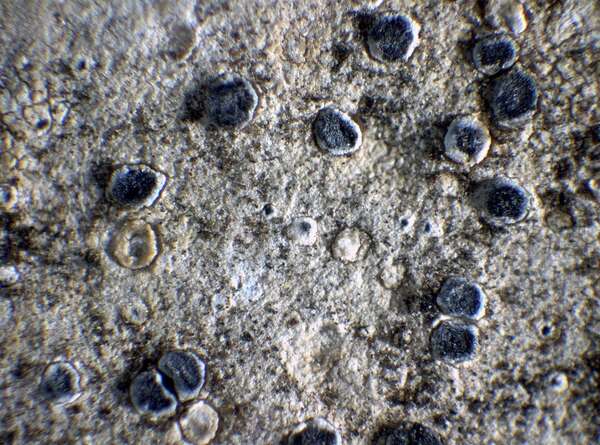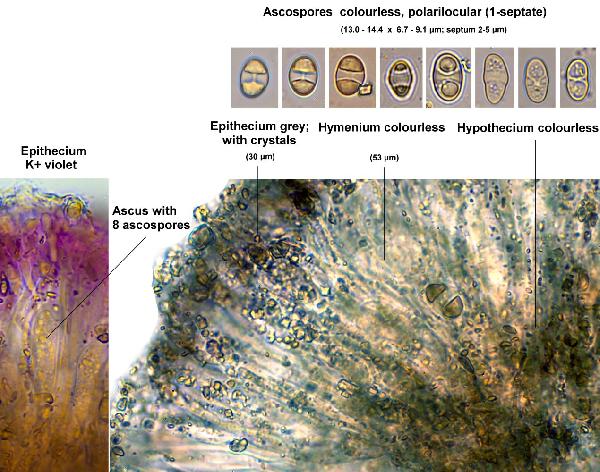Pyrenodesmia albopruinosa (Arnold) S.Y. Kondr.
in Kondratyuk & al., Acta Bot. Hung. 62, 3-4: 280, 2020. Basionym: Biatorina albopruinosa Arnold - Flora, 42: 152, 1859.
Synonyms: Blastenia agardhiana auct.; Blastenia agardhiana var. cinereovirens (J. Steiner) Szatala?; Blastenia agardhiana var. minuta (J. Steiner) Szatala?; Callopisma agardhianum auct.; Caloplaca agardhiana auct. non Pyrenodesmia agardhiana (Flot.) A. Massal.; Caloplaca agardhiana var. nigricans (Arnold) Jatta?; Caloplaca albopruinosa (Arnold) H. Olivier
Distribution: N - VG, Frl, Ven (Nascimbene & Caniglia 2003c, Nascimbene 2005c, Tretiach & Muggia 2006, Muggia & al. 2007, Frolov & al. 2020), TAA (Nascimbene 2003, Spitale & Nascimbene 2012, Nascimbene & al. 2022), Lomb, Piem (Isocrono & al. 2004), Emil, Lig. C - Tosc (Benesperi 2006, 2007b), Marc (Nimis & Tretiach 1999), Umb (Genovesi & Ravera 2001, Ravera & al. 2006), Laz, Abr (Nimis & Tretiach 1999, Gheza & al. 2021), Mol (Nimis & Tretiach, 1999, 2004, Caporale & al. 2008, Ravera & al. 2009, Genovesi & Ravera 2014), Sar (Neuwirth 2018). S - Camp (Nimis & Tretiach 2004, Garofalo & al. 2010), Pugl (Nimis & Tretiach 1999), Bas (Nimis & Tretiach 1999), Cal (Puntillo 2011), Si (Nimis & al. 1994, 1996b, Grillo & al. 2001, Grillo & Caniglia 2004, Caniglia & Grillo 2005).
Description: Thallus crustose, endosubstratic, white to pale grey, sometimes with an almost violet tinge, usually quite well-delimited. Apothecia zeorine, often immersed in pits in the rock, then subsessile, (0.2-)0.4-0.8(-1.2) mm across, with a flat, black to dark grey, often white- to bluish-pruinose disc and a rather thick, persistent, often pruinose proper margin margin. Thalline exciple reduced, with an up to 50 µm thick paraplectenchymatous cortex, almost completely filled by small, yellow brown crystals insoluble in K and soluble in N; proper exciple grey to dark brown in outer part, colourless within, the pigmented parts K+ violet, without crystals; epithecium grey to brown, with a layer of crystals, K+ violet; hymenium colourless, without oil droplets, 80-100(-115) µm high; paraphyses mostly simple, constricted at septa, the apical cells up to 5 µm wide; hypothecium colourless. Asci 8-spored, clavate, functionally unitunicate, apically thickened with a broad internal beak, the inner part of apex and external cap I+ blue, Teloschistes-type. Ascospores 2-celled, polarilocular, hyaline, broadly ellipsoid, 12-20 x 6-11 μm, the equatorial thickening (“septum”) (2.3-)2.5-4(-5) μm (c. 1/4 of spore length). Pycnidia rather common, immersed, the ostiolar region black. Conidia ellipsoid to ovoid, 2-3.5 x 1-1.5 µm. Photobiont chlorococcoid. Spot tests: thallus K- or K+ faintly violet, C-, KC-, P-, UV-; pigmented parts of apothecia K+ violet and sometimes N+ pale violet. Chemistry: Sedifolia-grey pigment in the apothecia, sometimes also in thallus. Note: on hard limestone and dolomite in sunny, exposed sites, from the lowlands to (mostly) the montane belt. In the analysis of Arup & al. (2013) this species is not placed in the same clade of Pyrenodesmia s.str. Several earlier records, especially those from low altitudes, are likely to refer to other species of the Pyrenodesmia-complex, especially to P. alociza. For further details see Muggia & al. (2007). A phylogenetic analysis of the entire group is in progress (Fernandez-Mendoza & al. 2016).
Growth form: Crustose endolithic
Substrata: rocks
Photobiont: green algae other than Trentepohlia
Reproductive strategy: mainly sexual
Commonnes-rarity: (info)
Alpine belt: absent
Subalpine belt: very rare
Oromediterranean belt: rare
Montane belt: rather common
Submediterranean belt: very rare
Padanian area: absent
Humid submediterranean belt: very rare
Humid mediterranean belt: extremely rare
Dry mediterranean belt: extremely rare
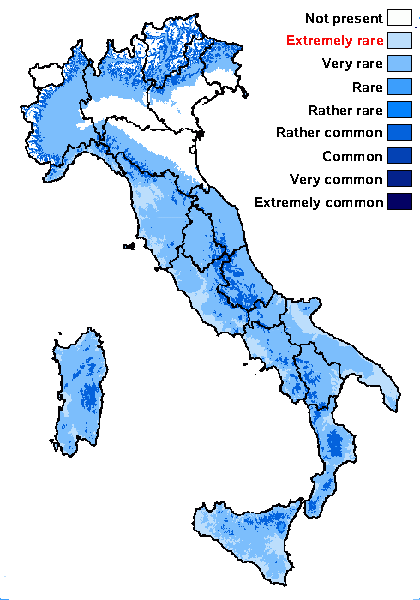
Predictive model
Herbarium samples

Courtesy Danièle et Olivier Gonnet - Source: https://www.afl-lichenologie.fr/Photos_AFL/Photos_AFL_P/Text_P_5/Pyrenodesmia_albopruinosa.htm
France, session AFL 20174 - Pic Sant-Michel - Vercors - Isère
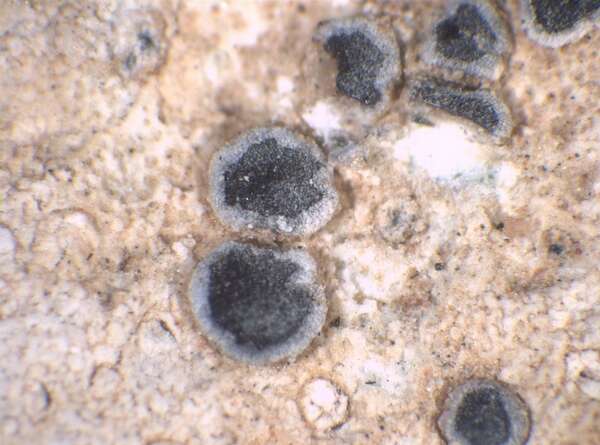

P.L. Nimis; Owner: Department of Life Sciences, University of Trieste
Herbarium: TSB (13307)
2002/12/02
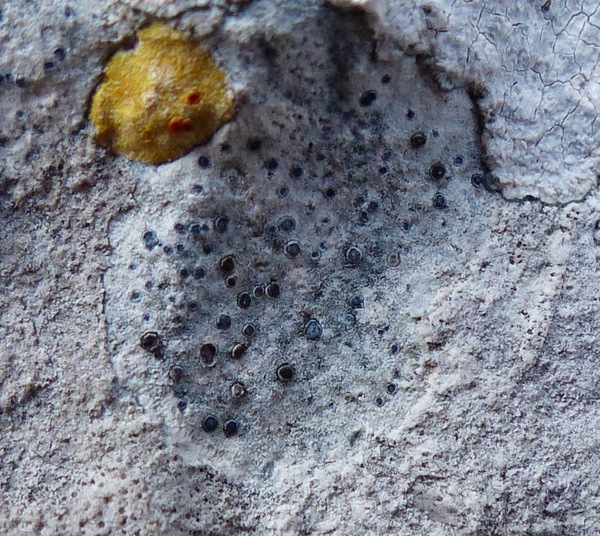

Andrea Moro; Owner: Department of Life Sciences, University of Triedte
Italy, Friuli Venezia Giulia, Trieste, Trieste Karst, Rocca di Monrupino
20/02/2017
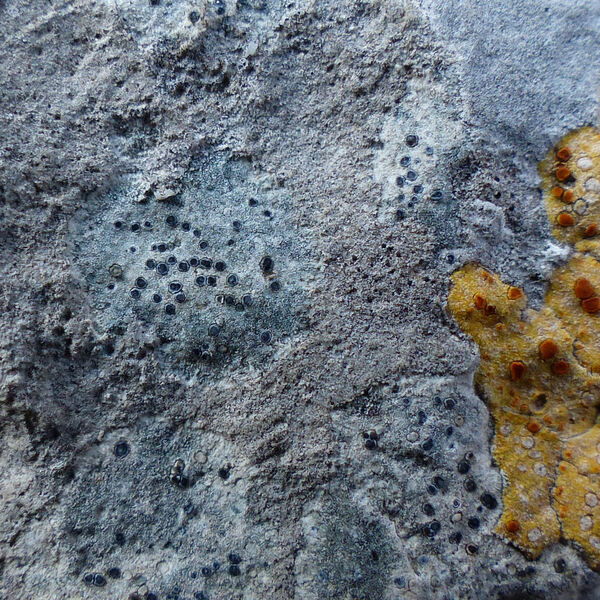

Andrea Moro; Owner: Department of Life Sciences, University of Triedte
Italy, Friuli Venezia Giulia, Trieste, Trieste Karst, Rocca di Monrupino
20/02/2017
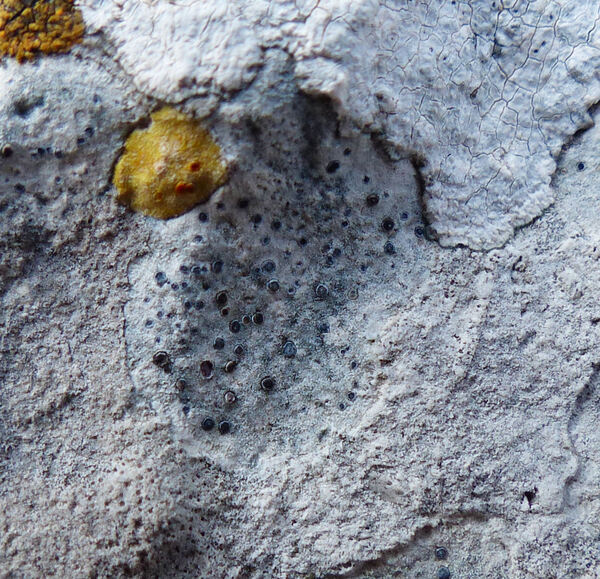

Andrea Moro; Owner: Department of Life Sciences, University of Triedte
Italy, Friuli Venezia Giulia, Trieste, Trieste Karst, Rocca di Monrupino
20/02/2017
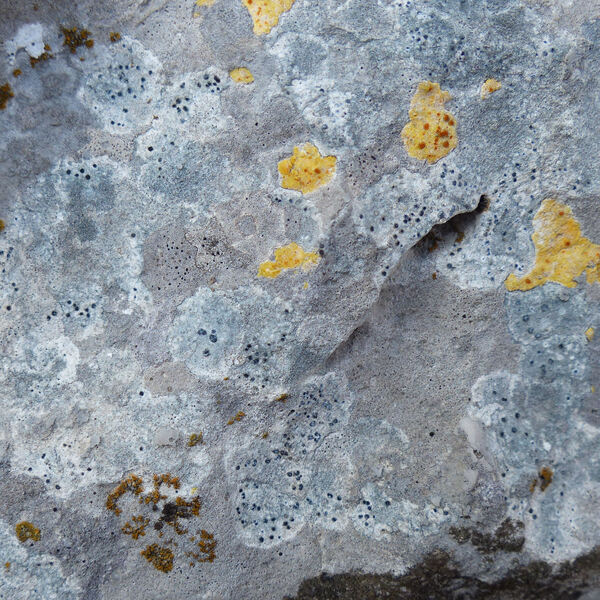

Andrea Moro; Owner: Department of Life Sciences, University of Triedte
Italy, Friuli Venezia Giulia, Trieste, Trieste Karst, Rocca di Monrupino
20/02/2017
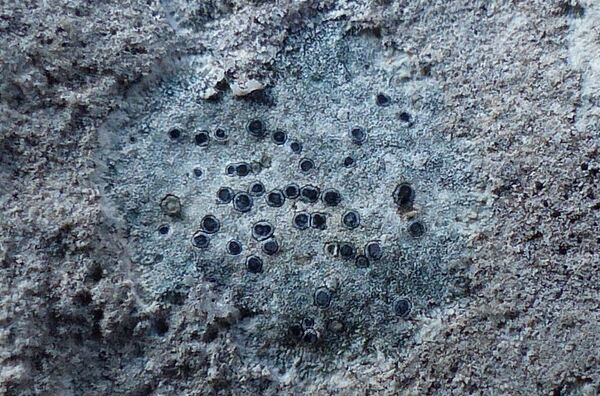

Andrea Moro; Owner: Department of Life Sciences, University of Triedte
Italy, Friuli Venezia Giulia, Trieste, Trieste Karst, Rocca di Monrupino
20/02/2017
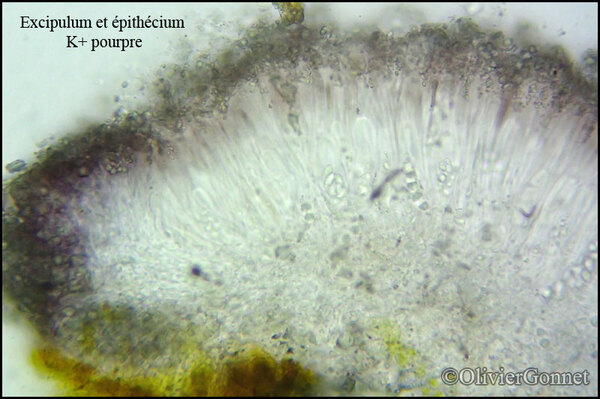
Courtesy Danièle et Olivier Gonnet - Source: https://www.afl-lichenologie.fr/Photos_AFL/Photos_AFL_P/Text_P_5/Pyrenodesmia_albopruinosa.htm
France, session AFL 20174 - Pic Sant-Michel - Vercors - Isère

Courtesy Danièle et Olivier Gonnet - Source: https://www.afl-lichenologie.fr/Photos_AFL/Photos_AFL_P/Text_P_5/Pyrenodesmia_albopruinosa.htm
France, session AFL 20174 - Pic Sant-Michel - Vercors - Isère

Ulrich Kirschbaum CC BY-SA 4.0 - Source: https://www.thm.de/lse/ulrich-kirschbaum/flechtenbilder
SE-Europe; N-Cyprus; SE of Girne; Beşparmak Mountains; between Girne Kayasi and Armenian Monastery (Sourp Margar); 5.
Growth form: Crustose endolithic
Substrata: rocks
Photobiont: green algae other than Trentepohlia
Reproductive strategy: mainly sexual
Commonnes-rarity: (info)
Alpine belt: absent
Subalpine belt: very rare
Oromediterranean belt: rare
Montane belt: rather common
Submediterranean belt: very rare
Padanian area: absent
Humid submediterranean belt: very rare
Humid mediterranean belt: extremely rare
Dry mediterranean belt: extremely rare

Predictive model
| Herbarium samples |

Courtesy Danièle et Olivier Gonnet - Source: https://www.afl-lichenologie.fr/Photos_AFL/Photos_AFL_P/Text_P_5/Pyrenodesmia_albopruinosa.htm
France, session AFL 20174 - Pic Sant-Michel - Vercors - Isère


P.L. Nimis; Owner: Department of Life Sciences, University of Trieste
Herbarium: TSB (13307)
2002/12/02


Andrea Moro; Owner: Department of Life Sciences, University of Triedte
Italy, Friuli Venezia Giulia, Trieste, Trieste Karst, Rocca di Monrupino
20/02/2017


Andrea Moro; Owner: Department of Life Sciences, University of Triedte
Italy, Friuli Venezia Giulia, Trieste, Trieste Karst, Rocca di Monrupino
20/02/2017


Andrea Moro; Owner: Department of Life Sciences, University of Triedte
Italy, Friuli Venezia Giulia, Trieste, Trieste Karst, Rocca di Monrupino
20/02/2017


Andrea Moro; Owner: Department of Life Sciences, University of Triedte
Italy, Friuli Venezia Giulia, Trieste, Trieste Karst, Rocca di Monrupino
20/02/2017


Andrea Moro; Owner: Department of Life Sciences, University of Triedte
Italy, Friuli Venezia Giulia, Trieste, Trieste Karst, Rocca di Monrupino
20/02/2017

Courtesy Danièle et Olivier Gonnet - Source: https://www.afl-lichenologie.fr/Photos_AFL/Photos_AFL_P/Text_P_5/Pyrenodesmia_albopruinosa.htm
France, session AFL 20174 - Pic Sant-Michel - Vercors - Isère

Courtesy Danièle et Olivier Gonnet - Source: https://www.afl-lichenologie.fr/Photos_AFL/Photos_AFL_P/Text_P_5/Pyrenodesmia_albopruinosa.htm
France, session AFL 20174 - Pic Sant-Michel - Vercors - Isère

 INDEX FUNGORUM
INDEX FUNGORUM
 GBIF
GBIF
 DOLICHENS
DOLICHENS
